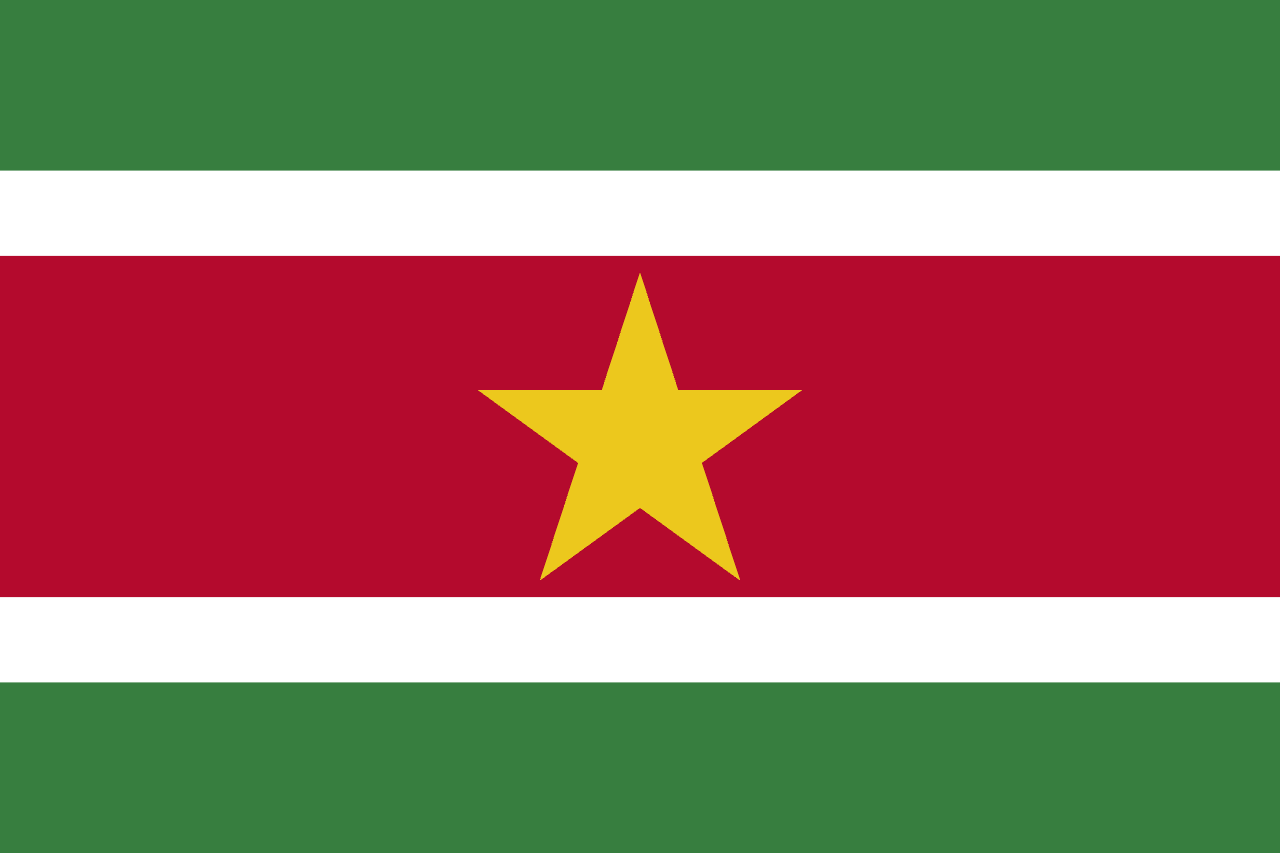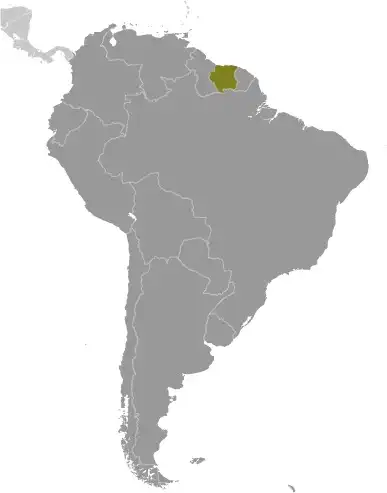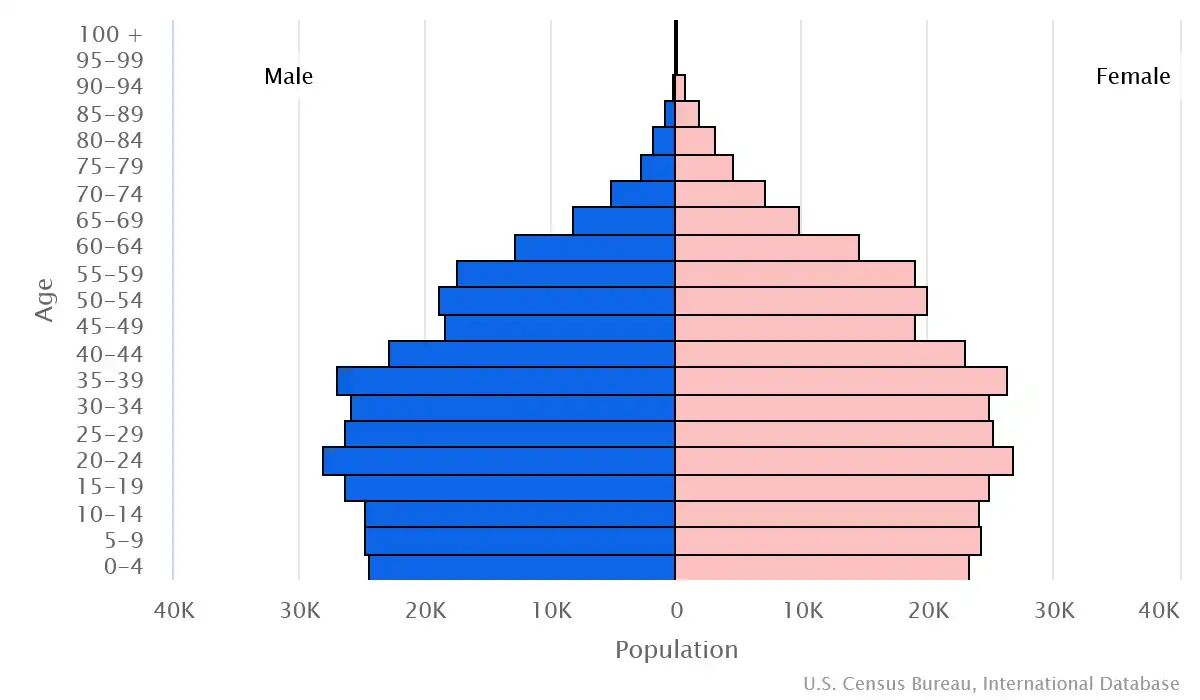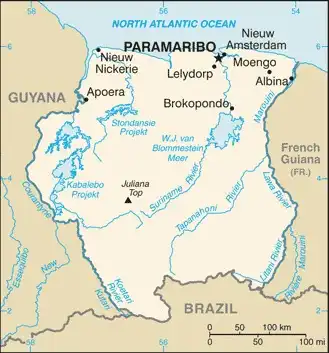
Suriname Country Profile
Key Facts of Suriname

| Government type: | presidential republic |
| Capital: | Paramaribo |
| Languages: | Dutch (official), English (widely spoken), Sranang Tongo (Surinamese, sometimes called Taki-Taki, is the native language of Creoles and much of the younger population), Caribbean Hindustani (a dialect of Hindi), Javanese |
Suriname Demographic Data
Ethnic Groups in Suriname(2012 est.)
Religious Groups in Suriname (2012 est.)
Age pyramid of Suriname

Suriname Economy Statistics
Economic overview of Suriname
upper middle-income South American economy; new floating currency regime; key aluminum goods, gold, and hydrocarbon exporter; new IMF plan for economic recovery and fiscal sustainability; controversial hardwood industry
Suriname Real GDP (purchasing power parity) in Billion $
Suriname Real GDP per capita in $
Suriname's Exports & Imports in billion $
Top 5 Import Partnerin 2022 (62%) of Suriname
Top 5 Import Commodities in 2022 of Suriname
- refined petroleum ⛽
- excavation machinery ⚙️
- cars 🚗
- plastic products ♻️
- tobacco 🚬
Top 5 Export Partnerin 2022 (79%) of Suriname
Top 5 Export Commodities in 2022 of Suriname
- gold 💰
- refined petroleum ⛽
- excavation machinery ⚙️
- wood 🌲
- fish 🐟
Geography of Suriname
Map of Suriname

Land and Water Distrubtion of Suriname
Natural Resources of Suriname
- timber 🌲
- hydropower 💧⚡
- fish 🐟
- kaolin 🪨
- shrimp 🦐
- bauxite 🪨
- gold 💰
- and small amounts of nickel 🪙
- copper 🟧🪙
- platinum 🪙
- iron ore ⛓️
Climate inSuriname
tropical; moderated by trade winds
History of Suriname - a Summary
The Spaniards first explored Suriname in the 16th century, and the English then settled it in the mid-17th century. Suriname became a Dutch colony in 1667. With the abolition of African slavery in 1863, workers were brought in from India and Java. The Netherlands granted the colony independence in 1975. Five years later, the civilian government was replaced by a military regime that soon declared Suriname a socialist republic. It continued to exert control through a succession of nominally civilian administrations until 1987, when international pressure finally forced a democratic election. In 1990, the military overthrew the civilian leadership, but a democratically elected government -- a four-party coalition -- returned to power in 1991. The coalition expanded to eight parties in 2005 and ruled until 2010, when voters returned former military leader Desire BOUTERSE and his opposition coalition to power. President BOUTERSE ran unopposed in 2015 and was reelected. Opposition parties campaigned hard against BOUTERSE in the run-up to the 2020 elections, and a multi-party coalition led by Chandrikapersad SANTOKHI’s VHP and Ronnie Brunswijk’s ABOP was installed.
